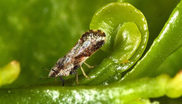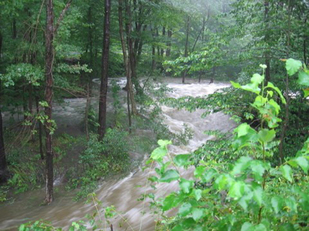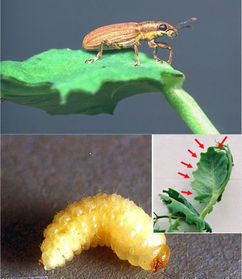|
|
|
Fresh from the Field is a weekly album showcasing transformative impacts made by grantees supported by the National Institute of Food and Agriculture.
Feb. 17, 2017
|
|
Success Stories of the Week
 From camelina oil to commercial jet fuel
The
camelina plant, which shows promise as a biofuel because of the oil contained
in its seeds, could become an economically feasible alternative to conventional
jet fuel.
NIFA's Agriculture and Food Research Initiative (AFRI) is supporting regional biofuel industries around the country. In the Northwest, researchers at Oregon State University (OSU) and other institutions are investigating the economic feasibility of camelina as a source for biofuels and other bio-based materials.They have demonstrated that camelina can be grown on
marginal land.
It also has potential to serve as a rotational crop with wheat, which
would aid soil preservation, and may provide a new, alternative market for
farmers.
Read more about the camelina project at the OSU website.
|
 Blue-bellied insects may combat citrus greening
The Asian citrus psyllid (ACP) is a primary vector for citrus greening, currently one of the most devastating citrus disease worldwide. The insect spreads the bacterium, known as Huanglongbing (HLB), causes citrus greening.
With NIFA funding through the Specialty Crop Research Initiative (SCRI), scientists at Boyce Thomas Institute (BTI) and other institutions may have found the insect’s Achilles' heel. They discovered that blue-bellied psyllids harbor high levels of a protein, hemocyanin, that may be involved in the insect’s attempt to fight off the bacteria.
Read the BTI article here.
|
 New report helps flood-prone New England communities
New England floods, like those that devastated the region in 2011, can be mitigated with relatively little additional cost and regulation, according to a University of Massachusetts - Amherst study supported by NIFA.
The research notes how rivers and streams have long been critical to New England’s economic, recreational, and environmental integrity. At the same time, these waterways face construction and river management pressures.
The study offers a range of recommendations on assessing flood risk, planning, and training to help New England communities thrive.
Learn more of the RiverSmart story here.
|
 The weevil and the pheromones
Montana is the number one pea and lentil growing state in the nation. For pea growers, the pea leaf weevil represents a major economic risk, since its larvae feed on the roots and damage the plants.
In the Golden Triangle region of Montana, producers are fighting these pests through NIFA-supported research at Montana State University. Researchers developed a liquid aggregation pheromone to attract adult weevils into pit-fall traps.
Read the PrairieStar's story here.
|
Swine respiratory health may shed light on human lung disease
North Carolina Agricultural and Technical State University (N.C. A&T) animal sciences researchers are studying the respiratory
health of swine raised indoors and outdoors. Their findings may lead to improved treatments of
COPD for swine, and
potentially, for humans.
The project was supported through NIFA’s Evans-Allen capacity grant program,
which supports agricultural research at 1890 land-grant institutions.
Read more about the N.C. A&T swine project here.
 A watershed success story in Tennessee
The Oostanaula Creek
Watershed in McMinn County, Tennessee, has seen its share of sediments,
pathogens, and pollutants. A University of Tennessee team funded by
NIFA's National
Integrated Water Plan includes a comprehensive watershed-wide education program to inform
farmers and residents about the importance of maintaining and improving water
quality throughout the watershed. The team implemented practices that required minimal cost or planning such
as improvements to pastures, riparian buffers, and fences.
The project has also
engaged the community at a "Live Staking Volunteer Day" at the
Tennessee Wetlands Festival. More than 2,500 contacts were made annually during
the project, including youth involved in 4-H programs. In August 2015, the
Tennessee Dept. of Environment and Conservation (TDEC) determined that
significant improvement has been made on water quality in the Oostanaula Creek.
Watch the video.
|
#NIFAIMPACTS

|
|
|
For more NIFA impacts,
visit nifa.usda.gov/impacts or
the Land-Grant University Impacts website. Send us your NIFA-funded impacts at impactstories@nifa.usda.gov or share them with
USDA_NIFA on Twitter
#NIFAimpacts.
NIFA invests in and advances agricultural research, education, and extension and seeks to make transformative discoveries that solve societal challenges.
Editor: Falita Liles; Co-Editor: Carlos Harris
|
|